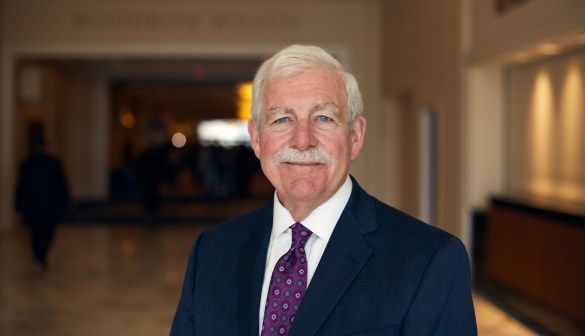NASCIO leaders lobby feds on cyber, grants and FirstNet

More than 50 state technology executives and CIOs from across the country met with legislators and federal officials Wednesday to make their voices heard on issues surrounding cybersecurity, federal grant programs and FirstNet.
The “DC Fly-In” was orchestrated by the National Association of State Chief Information Officers, which held its midyear conference in Alexandria, Virginia, earlier in the week.
The state IT leaders and representatives from the association sought, among other things, to look for ways for state and federal IT officials to work in greater alignment with each other, and in some cases, to lighten federal government’s restrictions on state government.
Just a day after the conference hosted a panel on state-level cybersecurity issues, featuring the chief information security officers from Missouri, Pennsylvania and Washington, state leaders met with officials from the White House, Congress and elsewhere in the federal government to highlight cybersecurity issues in the states.
One of the discussion items, especially with White House officials, was President Barack Obama’s February executive order that guided the Department of Homeland Security to recommend that states create information sharing and analysis organizations to better prepare for state cyber incidents.
“Most states, including Michigan, are already formally working as ISAOs and sharing cyber threat information with our key private sector partners,” Michigan CIO David Behen, a co-chair of NASCIO’s security and privacy committee, said in a release. “It is critical to establish partnerships between the public and private sectors on a regional basis in order to effectively and efficiently deter cyber threats.”
Virginia Gov. Terry McAuliffe announced April 22 that Virginia would be the first state in the nation to officially establish a state-level information sharing and analysis organization.
NASCIO also expressed its collective support for the Cybersecurity Information Sharing Credit Act, a Senate bill introduced by Sen. Jerry Moran, R-Kan., and Kristen Gillibrand, D-N.Y., which would provide federal tax credits to industry members who participate in cybersecurity ISAOs.
State CIOs and association leaders also met with White House Cybersecurity Coordinator Michael Daniel. According to the release from NASCIO, the conversation focused on how states could work with the White House to further increase information sharing on key cyber threats and mature and expand their cybersecurity programs.
“State CIOs and their teams play a key role in securing state infrastructure against cyber threats,” Stu Davis, NASCIO’s president and Ohio’s state CIO, said. “The sophistication of those threats are growing, and there are insufficient resources to meet them.”
NASCIO said state CIOs remained committed to growing the role of the states in information sharing among key public and private sector partners after the meeting.
“It’s vital that we engage with our federal partners now to ensure we have the right structures in place,” Davis said. “State governments — and our nation — are at risk.”
During the D.C. visit, state officials also met with Tony Scott, the recently appointed federal CIO. During that meeting, organization leaders discussed with Scott opportunities to jointly identify ways to harmonize and update existing federal agency rules that impact how states use IT.
CIOs, the association said, told Scott that some federal program requirements and directives imposed by federal agencies have unintentionally hindered state government efforts to modernize service channels and to “achieve better outcomes for its citizens at lower cost.”
“State innovation is often derailed, not only by technology rules that haven’t kept up with new IT business practices, but also inconsistent interpretation and application of them by federal agencies,” Davis said, according to a NASCIO release. “We want to work with Mr. Scott and the federal government to harmonize grant requirements when it comes to information technology policy, and incentivize states to take cross-jurisdictional and enterprise approaches to technology that result in cost reductions and improved services for citizens.”
StateScoop reached out to the White House’s Office of Management and Budget for comment on whether Scott or the Office of E-Government and Information Technology had any plans to adjust the programs burdening state government IT modernization and cost-saving efforts, but did not get a response.
During their fly-in, NASCIO members also met with the First Responder Network Authority, known as FirstNet, to talk about the next steps for FirstNet to continue to plan and deploy a nationwide interoperable public safety broadband network.
“A positive and productive relationship between FirstNet and the states will be crucial for the viability of the network,” NASCIO Vice President and New Mexico CIO Darryl Ackley said in a release.
In particular, members expressed interest in how FirstNet will develop plans for individual states and the type of business model FirstNet will choose to keep the network sustainable.
“This is a tremendously large and ambitious undertaking: States and FirstNet need to be working toward unified goals with a common understanding of who has what responsibility,” Ackley said.






